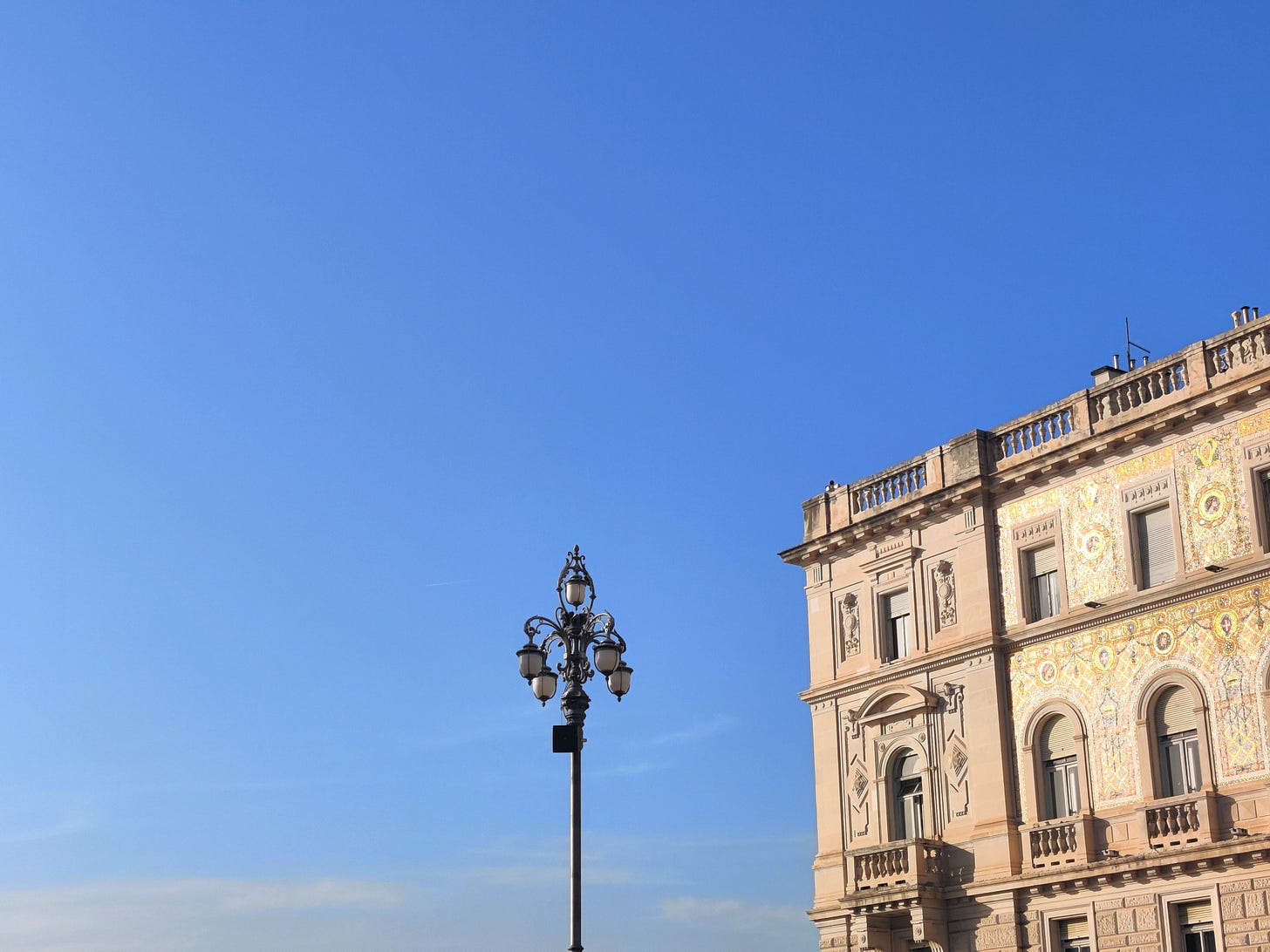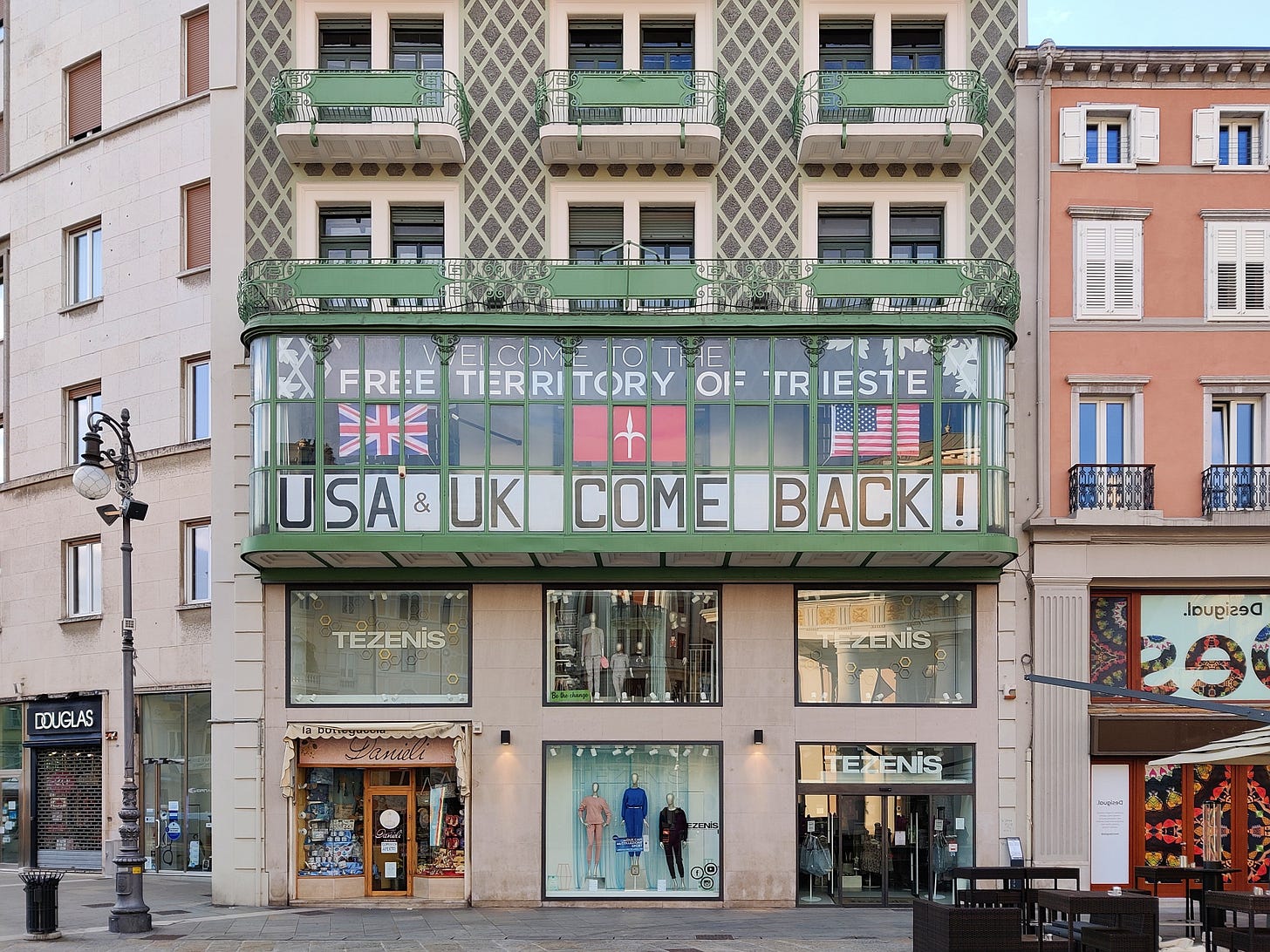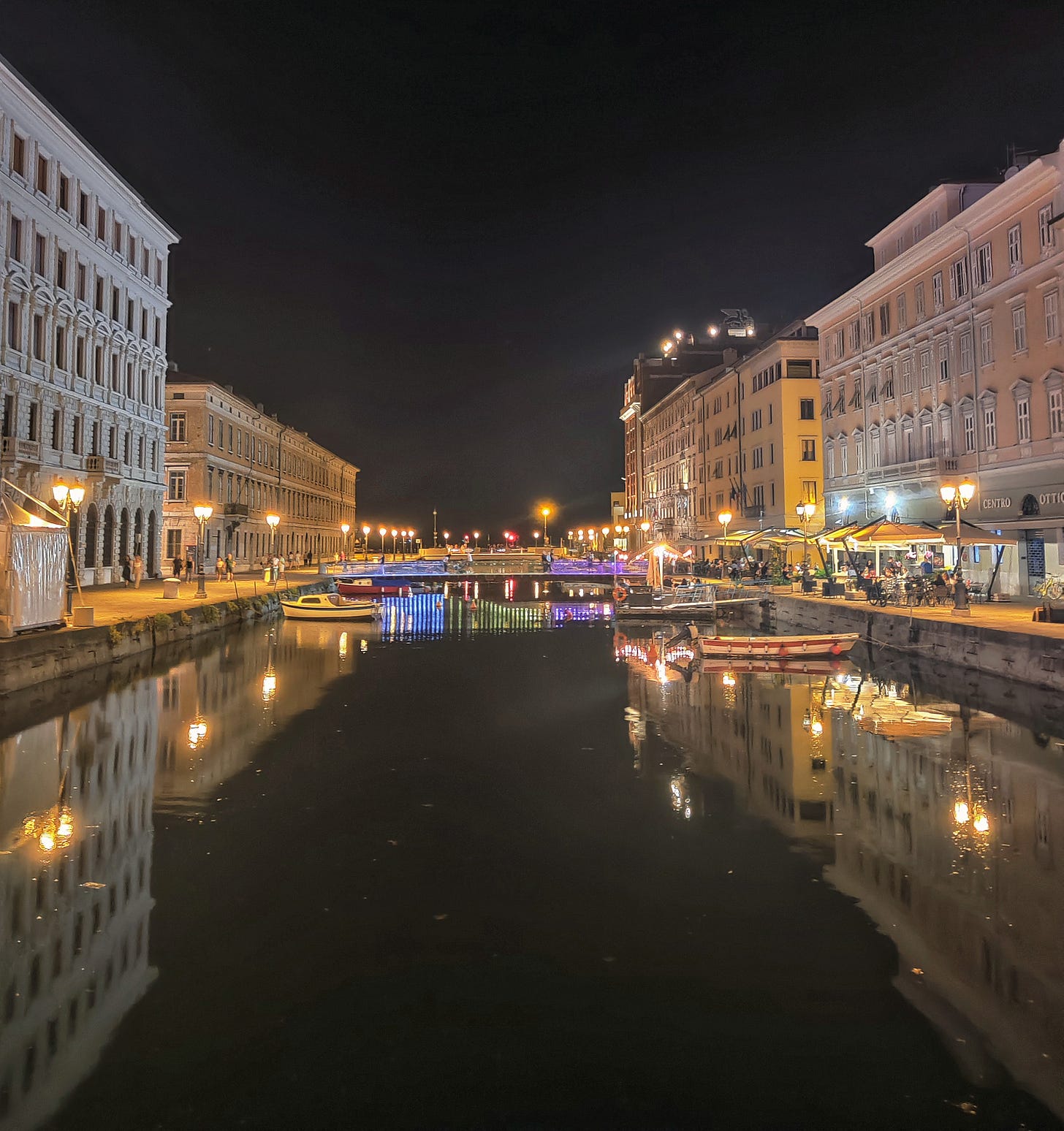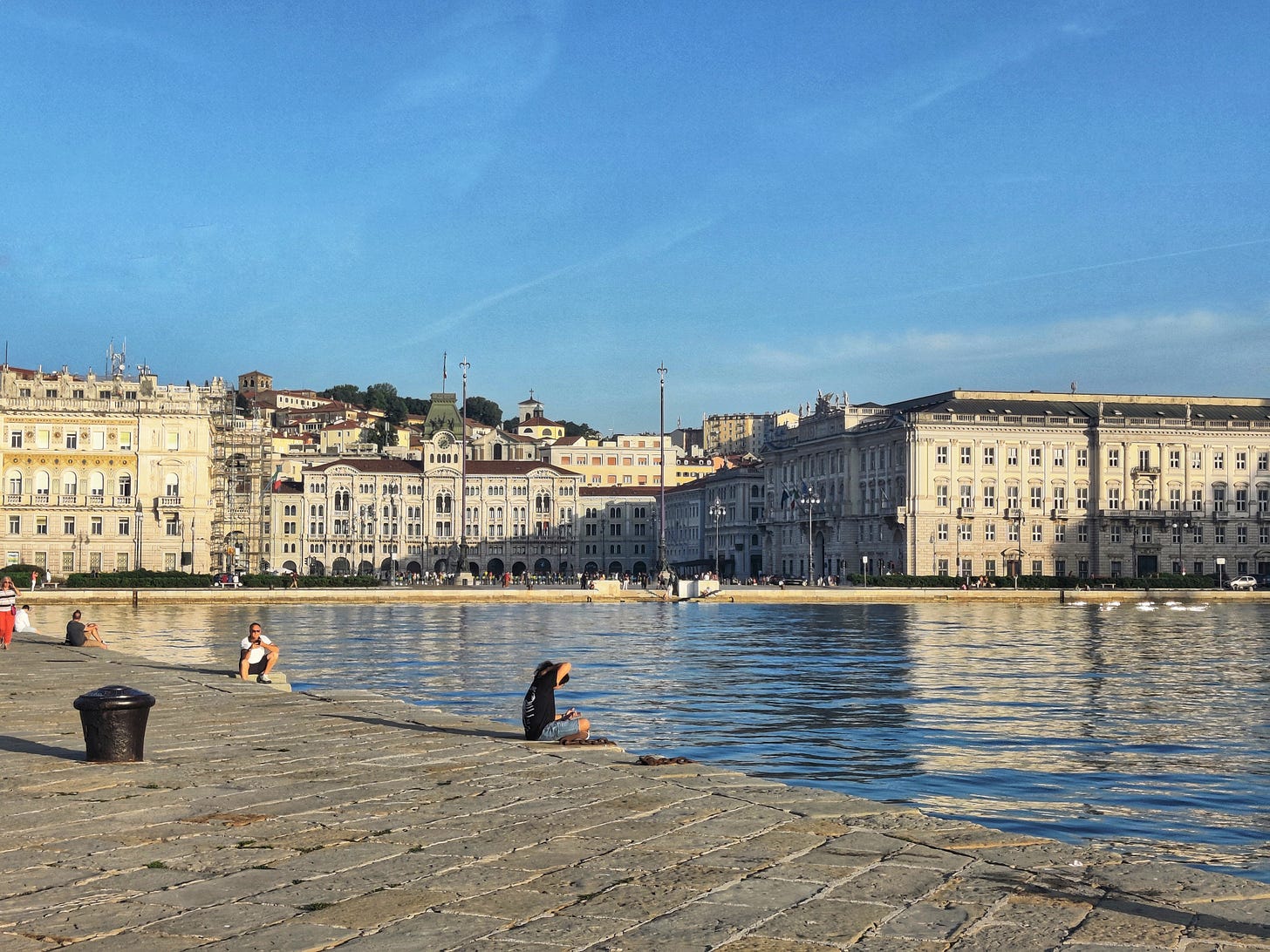In the far northeast of the boot, there's a city that sometimes fades into the shadows compared to the more mainstream Italian images led by other Italian masterpieces such as Florence, Venice, and Rome. Yet, it carries an incredible history: Trieste. It's been a recent discovery for me. I knew about it; my grandparents, who lived there as youngsters, talked about it, but I had never truly grasped its essence.
Trieste is an incredible city and perhaps the most youthful in Italy, as it has only been a part of Italy since 1918, a brief period when considering the history of the old continent (there's a reason it's called "old"). Before that, it was Austrian for over 500 years (during the times of Princess Sissi), and a visit is all it takes to understand the impact. The geometry, the buildings, the architecture—none of it is typical Italian. It feels like being in Central Europe. It boasts a massive port with a historic pier, one of the most important in the Mediterranean, historically the only outlet for the Habsburg Empire and still an integral part of the city.
Trieste is a border city, in constant cultural exchange, having witnessed and experienced various peoples and administrations. One of these periods even involves America. Few know that after World War II, the city went through an American phase. After the war, the city suddenly became the focus of significant strategic interests because it lay on the line dividing the Western world from the communist bloc. Thus, until 1954, it was divided into two zones: Zone A was under American and British control on behalf of the UN, while Zone B was under Yugoslav control. For nine years, the city lived the American dream more than any other Italian city. Ballrooms, rock and roll, American products, and many marriages between soldiers and Triestine women. Those times are remembered as happy years, perhaps explaining why the city is extremely international, a crossroads of diverse cultures: Italian, English, American, Austrian, Slavic.
Walking through Trieste allowed me to savor its history—it feels like being in Vienna but by the sea. Piazza Unità is the largest sea-facing square in Europe, not to mention the wonderful Teresian district, named after Maria Theresa of Austria, a district frozen in the 18th century cradled by a canal that enters the city. Beautiful at all times, but indescribable at sunset. It's full of small restaurants; I visited in the summer and had dinner by the canal—very charming.
During my stay, I discovered that, along with Naples, Trieste is one of the Italian cities most linked to coffee, also due to its port. It's impossible to visit without sitting in one of Trieste's historic cafes to indulge in the pleasure of relaxing with a steaming cup. I went to the famous Caffè degli Specchi in Piazza Unità—yes, it's very touristy, but also very charming (there are many others: Caffè Tommaseo on the waterfront, Caffè San Marco, a refuge for irredentists, Caffè Torinese, and more).
And then there's Miramare Castle, but that's another incredible story to tell separately. All of this is just a 2-hour train ride from the Renaissance, Baroque, and somewhat Gothic Venice.
A gem not to be missed.









This city has been on my list 🥰
💖 I LLLLLOVE TRIESTE 💖 and hope to move there one day. I also learnt that it suffers the same phenomenon as in Venice, high water. I crave to dive in the Austrian traces, read James Joyce (who departed but left his soul there) and find myself immersed into a more cosmopolitan environment. Superthanks for sharing. One final question: did you feel it is an ideal city for those who enjoy quiet life? Such as writing a book, or reading...